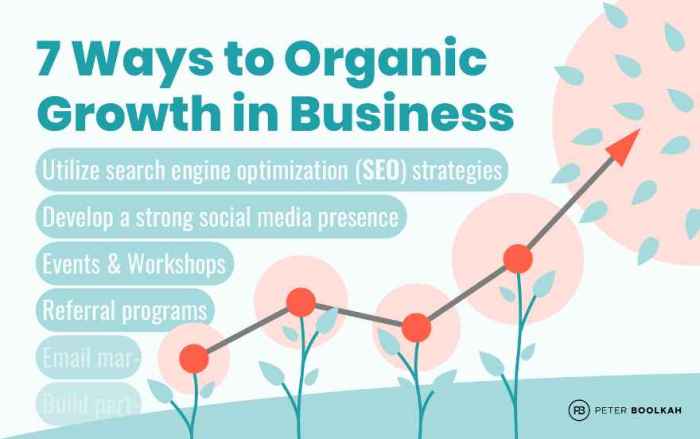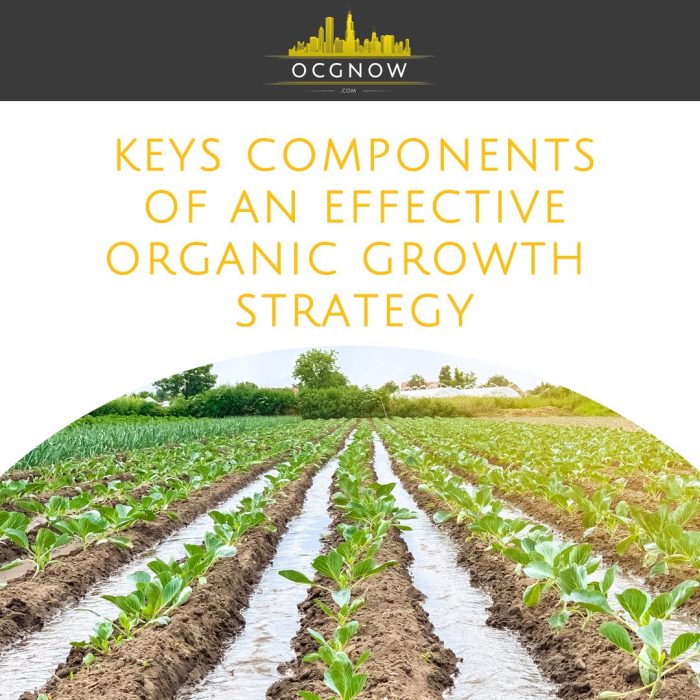Understanding Organic Growth sets the stage for unlocking business success through strategic expansion and innovation. Dive into the world of organic growth to discover its transformative power.
Organic growth in business refers to the natural expansion of a company through internal strategies, as opposed to inorganic growth that involves mergers or acquisitions. With examples of successful organic growth strategies, businesses can harness this approach for sustainable development.
What is Organic Growth?

Organic growth in the business context refers to the steady and sustainable increase in a company’s sales, revenue, and market share through internal strategies, without the need for mergers, acquisitions, or other external activities.
Differences Between Organic and Inorganic Growth
Organic growth is achieved through initiatives such as product development, increased marketing efforts, and expanding into new markets using existing resources. On the other hand, inorganic growth involves mergers, acquisitions, or partnerships with other companies to quickly expand the business.
Examples of Organic Growth Strategies
- Launching new products or services that cater to existing customer needs.
- Expanding into new geographic regions with a focus on building a loyal customer base.
- Investing in research and development to improve existing products or create innovative solutions.
- Enhancing marketing and advertising campaigns to reach a wider audience and increase brand awareness.
Factors Influencing Organic Growth
Organic growth in business is influenced by various key factors that play a crucial role in driving sustainable development and expansion. These factors are essential for businesses looking to grow steadily and consistently over time.
Market Conditions
Market conditions have a significant impact on organic growth. Factors such as consumer demand, competitive landscape, economic trends, and regulatory environment can either facilitate or hinder a company’s growth trajectory. Adapting to changing market conditions, identifying new opportunities, and understanding consumer preferences are vital for sustaining organic growth.
Innovation
Innovation is a key driver of organic growth as it enables companies to develop new products, services, and processes that meet evolving customer needs. By fostering a culture of creativity and experimentation, businesses can stay ahead of the competition and continuously improve their offerings. Embracing innovation allows companies to differentiate themselves in the market and attract new customers, ultimately fueling organic growth.
Strategies for Achieving Organic Growth: Understanding Organic Growth
To achieve organic growth, businesses can implement various strategies that focus on expanding their customer base, increasing customer loyalty, and improving overall business performance. These strategies are essential for sustainable growth and long-term success.
Importance of Customer Retention
Customer retention plays a crucial role in achieving organic growth as it involves keeping existing customers satisfied and loyal to the brand. By focusing on retaining customers, businesses can benefit from repeat purchases, positive word-of-mouth referrals, and increased customer lifetime value. This, in turn, leads to a more stable revenue stream and sustainable growth over time.
- Provide exceptional customer service to build strong relationships with customers.
- Customize products or services to meet the specific needs and preferences of your target audience.
- Implement loyalty programs to reward customers for their continued support and encourage repeat purchases.
Happy customers are more likely to become repeat customers and brand advocates, contributing to organic growth.
Significance of Scalability
Scalability is vital for sustaining organic growth as it allows businesses to efficiently handle increased demand, expand operations, and adapt to changing market conditions. A scalable business model enables companies to grow without compromising quality, customer experience, or profitability.
- Invest in scalable technologies and infrastructure to support business growth without significant disruptions.
- Streamline processes and workflows to improve efficiency and productivity as the business expands.
- Focus on developing a flexible organizational structure that can easily adapt to evolving market trends and customer needs.
Measuring Organic Growth

Organic growth is a key indicator of a company’s success, showcasing the ability to expand without relying on external factors. In order to measure organic growth effectively, businesses use specific key performance indicators (KPIs) and calculate the organic growth rate.
Key Performance Indicators for Organic Growth
- Revenue Growth: This KPI measures the increase in revenue generated by the company over a specific period of time. It is a direct reflection of the company’s organic growth.
- Customer Acquisition Rate: Tracking the number of new customers acquired without the help of acquisitions or mergers shows the company’s ability to grow organically.
- Organic Traffic: Monitoring the percentage of website visitors who found the site through organic search results indicates the effectiveness of marketing strategies.
Calculating Organic Growth Rate
To calculate the organic growth rate, use the following formula:
Organic Growth Rate = ((Current Period Revenue – Previous Period Revenue) / Previous Period Revenue) x 100
This formula helps quantify the percentage increase in revenue that is solely attributed to organic factors.
Challenges in Measuring Organic Growth, Understanding Organic Growth
- Attribution: It can be challenging to accurately attribute revenue growth solely to organic efforts, as there may be other external factors at play.
- Data Accuracy: Ensuring the data used to calculate organic growth is accurate and consistent across all metrics can be difficult, leading to potential discrepancies.
- Long-Term Impact: Organic growth takes time to materialize, making it challenging to measure the immediate impact of organic strategies accurately.
